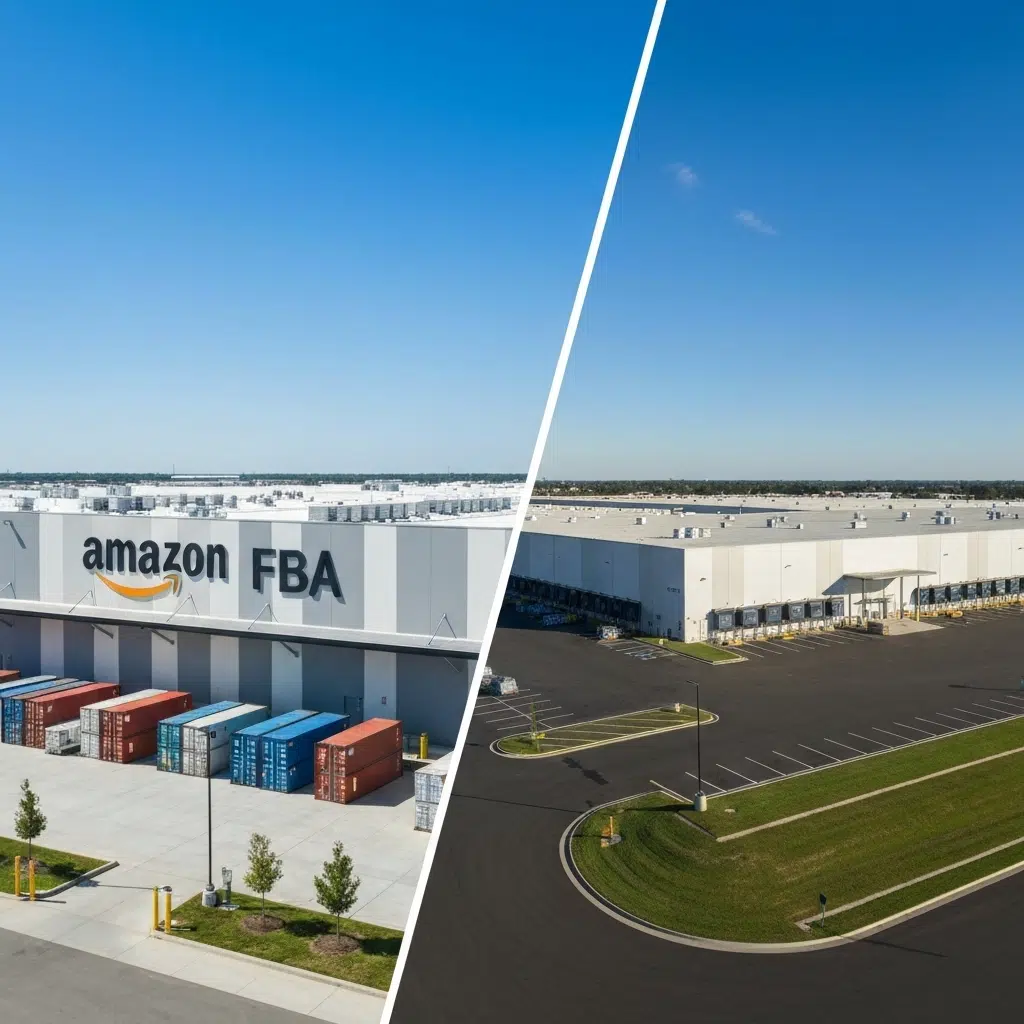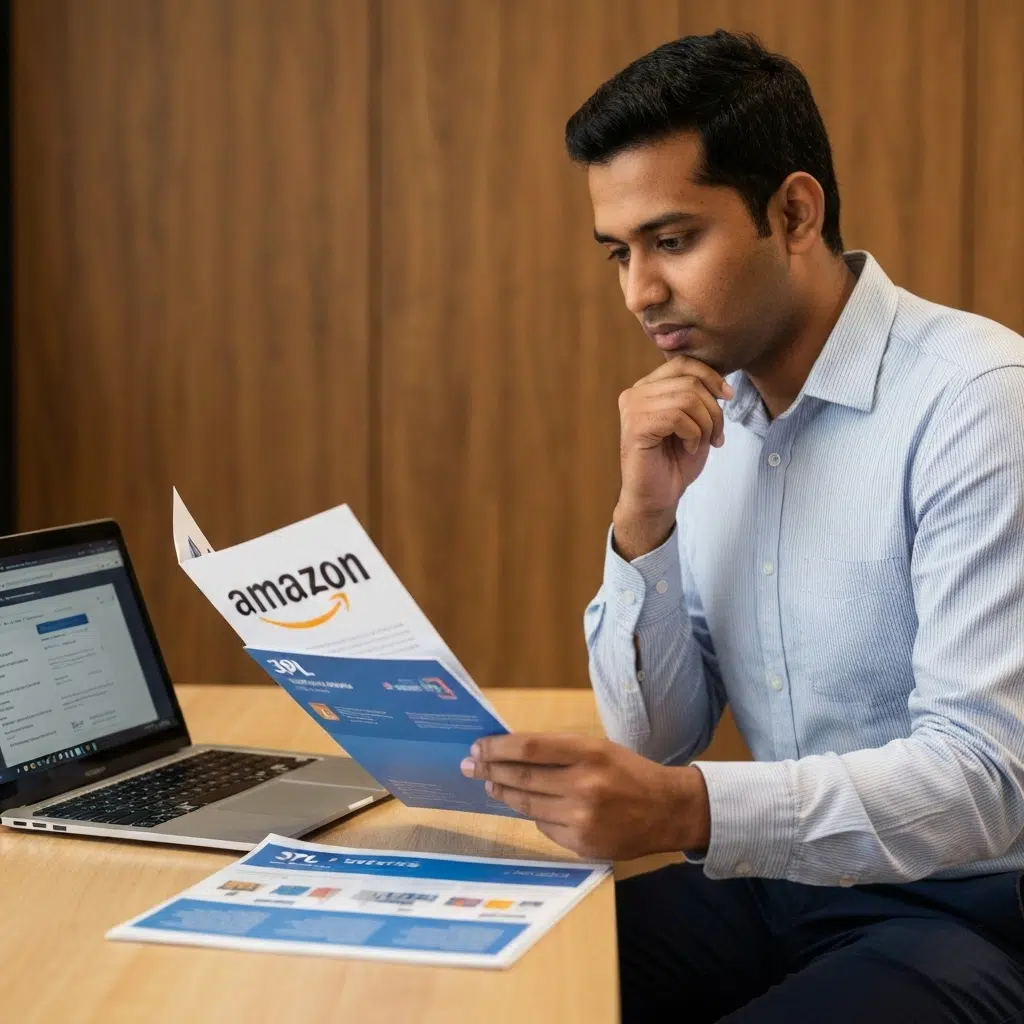The Real Cost of Using a 3PL for Amazon FBA
3PL for Amazon FBA can cut both and profit margins. That is, unless you understand the benefits, hidden fees, and when to use 3PL.
Order fulfillment is the backbone of your business, but logistics goes beyond packing and moving products for 8-figure Amazon sellers. Even slight inefficiencies can cut margins, weaken competitiveness, and create customer experience issues.
While many sellers rely on Fulfillment by Amazon, it may not be a perfect fit for you.
Have you considered using a Third-party logistics (3PL) provider? When brands face rising fulfillment challenges, supplementing your fulfillment with a 3PL for Amazon FBA can offer more flexibility, control, and potentially lower costs.
Why Turn to a 3PL for Amazon?
Amazon’s logistics network is hard to beat. The FBA machine remains the benchmark for expediency, customer service, and scalability. But as brands hit the 8-figure revenue mark, some pain points arise:
- Storage limits slow inventory turnover down.
- Inventory placement service fees that penalize multi-warehouse distribution.
- Inventory restrictions during peak periods.
- Limited visibility and control over storage and packaging.
- Rising FBA fees for oversized or slow-moving items.
A well-chosen 3PL partner can store inventory closer to your key selling territories, manage prep and compliance. The best Third-Party Logistics partner can even act as a prep center and a distribution hub for Walmart, Shopify, and DTC channels.
Working with 3PL Partners
Fulfillment providers promise flexibility and control. However, they also bring hidden costs that can offset the benefits. However, it’s crucial that you first understand the complete financial picture of using a 3PL company.
While the promise of lower fees and flexibility is appealing, the reality is more nuanced. Let’s break down the hidden costs that sellers often miss when evaluating Amazon FBA vs 3PL.
It isn’t just about shipping costs; it’s a combination of various fulfillment services that impact your bottom line, and each stage has an associated cost.
While the promise of lower fees and flexibility is appealing, the reality is more nuanced. To accurately budget, let’s break down the top hidden costs that sellers often miss when evaluating Amazon FBA vs 3PL.

Setup and Onboarding
When you first partner with a 3PL, you’ll likely encounter initial onboarding costs. Many third-party logistics companies charge for account setup, software integration, and SKU onboarding.
These fees mostly cover integration; that is, setting up yout Amazon seller account to their warehouse management system (WMS). It also serves to allocate space for your products, and training you on their fulfillment platform.
Such costs, however, can add up quickly for brands with hundreds of SKUs. Some 3PLs charge a one-time onboarding fee, ranging from $500 to over $1,000 for enterprise-level integrations. Others might charge as much as $3,000―particularly those targeting larger businesses.
Storage Fees
This is one of the most significant ongoing expenses. Both Amazon FBA and 3PLs charge for warehouse space. Amazon charges for storage based on cubic feet and seasonality. That said, FBA long-term storage fees can become quite expensive for slow-moving SKUs.
3PL warehouse companies also charge a per-cubic-foot rate each moth, or a “per-pallet” fee, which might offer a more straightforward approach to some sellers. A good 3PL provider charges on a daily basis, giving you more flexibility if your stock levels fluctuate. This can lead to major savings, especially if you sell seasonal products or want to avoid Amazon’s punitive fees.
Picking and Packaging
Every sigle fulfillment process begins comes with its own set of costs. Pick-pack fees, kitting, labeling, and prep services are often billed separately. This rates typically cover the labor involved in locating the item in the warehouse and preparing it for shipment.
Some 3PLs charge a flat fee for the first item, and a smaller fee for each additional item in the same box. While this model makes it easy to predict fulfillment costs for multi-item orders, such nickel-and-dime charges can make 3PL more expensive than FBA.
Shipping and Partnered Carriers
Shipping costs from a 3PL distribution company adds extra freight costs. In contrast to the Amazon partnered carrier program, many 3PLs pass on less competitive rates – unless previously negotiated.
In fact, one of the main advantages of using a 3PL for Amazon FBA is gaining access to their negotiated rates. Because 3PLs ship in massive volumes, they secure significant discounts from carriers like USPS FedEx, UPS, and USPS, which are then passed on to you.
A good 3PL will recommend you the most cost-effective methods, according to their expertise. In doing so, you’ll save in unnecessary surcharges and optimize delivery times. Many also operate a network of fulfillment centers., Thus, they’ll ship from locations closer to your customers, further reducing shipping costs and delivery times.
Returns Management
You can’t avoid handling returns. It is a critical component of your supply chain, but also of your customer service strategy. Plus, it comes with its own costs.
How a third-party logistics service manages your returns can significantly impact both your expenses and customer satisfaction.
When a customer sends a product back, there are several steps involved. The 3PL receives the package, inspects the item to determine if it can be resold, and processes the return in their system. Each of these actions may have an associated fee. Some 3PLs charge a flat fee per return, while others may have separate charges for inspection, restocking, or disposal of damaged goods.
Technology Integration
Just as fulfillment by Amazon is deeply integrated into Amazon Seller Central, a 3PL should integrate their WMS with your Amazon store and other sales channels.
Integration allows for seamless order processing, real-time inventory management, and accurate reporting. But you’ll acquire an integration fee, of course―either as part of the initial onboarding or as a monthly subscription. In return, you’ll have access to the 3pl fulfillment platform, where you can monitor stock levels, track orders, and view performance data.
FBA Prep Service
Amazon has strict requirements for how products must be labeled, packaged, and shipped to their warehouses. So, if you plan to use a 3PL to send inventory to Amazon, you’ll need an FBA prep service. A 3PL company can handle this process, but it comes at a cost.
Prep charges vary based on the services required, which can include:
- Inspection. Checking products for damage.
- Amazon FNSKU Labeling. Applying Amazon-specific barcodes to each item.
- Packaging. Bagging, boxing, or bubble-wrapping items according to Amazon’s rules.
Minimum Monthly Spend
Some 3PLs have minimum monthly spend requirements to ensure profitability. So, if your total service fees don’t reach a certain threshold, they’ll bill you the difference. This is could turn into a key challenge for SBMs with fluctuating order volumes.
If your fulfillment needs are inconsistent, a high minimum spend can quickly eat into your profits. You might end up paying for services you didn’t even use. Some 3PLs do cater to new sellers, however. By not having minimums, they can provide you with flexible monthly spends as you scale.
Hidden and Unexpected Expenses
Always look beyond the standard charges. Some costs may not be obvious in the initial quote, but they can significantly increase your monthly bill. A transparent 3PL will disclose all potential charges, but it’s wise to know what to look for:
- Dimensional Weight Surcharges based on a package’s size, not just its weight.
- Account Management Fee for having a dedicated support contact.
- Fuel Surcharges added by carriers.

Amazon FBA vs 3PL Providers
The question isn’t about which service is universally “better,” but which creates the most sustainability for you. While FBA offers seamless integration with Amazon, it provides little room for customization and comes with complex fees . A third-party logistics provider can offer a more personalized service tailored to your business model.
Here’s how they stack up:
| Amazon FBA | Third-Party Logistics | |
|---|---|---|
| Prime Eligibility | Automatic | Requires Seller Fulfilled Prime |
| Fees | Transparent but rising | Complex, varies by provider |
| Scalability | Global, instant | Depends on partner network |
| Control | Low | High |
| Multi-channel Flexibility | Limited | Strong |
Let’s compare the key differences between FBA and Third-Party Logistics to help you decide which model is best for your eCommerce business.
Service Scope
Amazon FBA provides streamlined order fulfillment through its vast warehouse network, with focus on storage and shipping. A 3PL for Amazon FBA offers custom packaging, diverse logistics services, and dedicated customer support.
Third-party logistic services can also manage inventory levels across various sales channels, enhancing the brand experience and facilitating seamless order management for growing brands.
Pricing Structures
Amazon FBA costs often include storage fees, shipping costs, and referral fees. A 3PL typically offers a clearer fee structure with fewer hidden costs. The best partners also provide transparency in storage space and order fulfillment services, allowing you to better manage logistics operations.
Inventory Control and Visibility
Adopting a 3PL for Amazon FBA can enhance visibility into inventory levels, enabling better decision-making and efficient order processing. An advanced WMS facilitates real-time tracking, reducing the chances of stockouts or overstocking.
Utilizing a fulfillment partner allows sellers to leverage services that offer detailed reporting about current stock and flow. This insight also aids in optimizing storage costs and shipping rates.
Customer Experience and Returns
3PLs can streamline returns through efficient order processing and inventory management. The best platforms support quick returns, with transparent shipping costs and no-nonsense return policies. This level of service builds trust and contributes to stronger relationships, ensuring that customers choose your business over others.

When Does a 3pl for Amazon Makes Sense?
Despite these challenges, many 8-figure brands still use 3PL for Amazon FBA. In fact, they actually consider hybrid fulfillment as the winning model. You can use Amazon FBA for high-velocity SKUs, and rely on a 3PL to manage long-tail SKUs, prep, or multi-channel orders.
The key is understanding when it’s ideal to set up a hybrid strategy:
- Inventory overflow when Amazon imposes restock limits.
- Multi-channel expansion into Walmart, Target Plus, or Shopify.
- International growth to avoid high cross-border costs.
- Specialized handling for fragile, oversized, or seasonal products.
Note, however, that every additional fulfillment partner adds complexity to your operations. Poorly coordinated logistics can:
- Increase lead times
- Complicate demand planning
- Introduce quality control risks
- Inflate costs through duplicated fees
That’s why switching fulfillment partners should be done with a clear roadmap. When you evaluate alternatives focus on risk analysis, cost modeling, and operational simulations.
Final Thoughts
A 3PL for Amazon FBA can be both a cost-saver and a margin killer. The difference lies in strategic execution. While FBA remains unmatched for speed and Prime conversion, Third-Party Logistics offers flexibility, control, and multi-channel leverage.
The key isn’t choosing one over the other—it’s designing a fulfillment strategy that balances cost, scalability, and customer experience. Sellers that can master this balance will protect their margins and unlock new growth channels in an increasingly competitive ecommerce landscape.
Author
 Esteban Muñoz is a writer, editor and content manager with several years’ experience in ecommerce and digital marketing. Over the years, he’s been able to help his associates grow by optimizing and creating in-depth content marketing strategies.
Esteban Muñoz is a writer, editor and content manager with several years’ experience in ecommerce and digital marketing. Over the years, he’s been able to help his associates grow by optimizing and creating in-depth content marketing strategies.
The post The Real Cost of Using a 3PL for Amazon FBA appeared first on AMZ Advisers.


